Luxury Uganda Safari Tours
See All Uganda Gorilla Safaris
Nicknamed the “Pearl of Africa,” Uganda shines with stunning greenery, deep lakes, soaring mountains and perhaps the greatest natural treasure of all — half of the world's last remaining mountain gorilla population. On A&K Uganda gorilla safari tours, travel deep into the heart of Bwindi Impenetrable National Park and see these incredible, endangered creatures from closer than you ever thought possible.
While other tour operators with gorilla trekking in Uganda, A&K’s tours deliver you into gorilla country: A&K guests lodge in Sanctuary Gorilla Forest Camp, the only camp located within the Impenetrable Forest, a UNESCO World Heritage Site. From this luxurious home base, set off on daily gorilla treks — tours that let you track down these magnificent mammals at their most natural. It is rare, privileged sight experienced by only the most fortunate. An even luckier few might see them within the Gorilla Forest Camp. There are no barriers, redefining what a close wildlife encounter can be.
Beyond Bwindi Impenetrable Forest, visit Kibale Forest National Park, known for having the highest primate density of any other region on earth. In Queen Elizabeth National Park, spot plains game, including the rare Uganda kob, Cape buffalo and lions.
Let A&K tours show you a different kind of gorilla-trekking safari in Uganda. Gorilla trekking in Uganda with A&K is second to none.
Best Time To Go
January - March, July - SeptemberClimate Charts
Time Zone
ET +8 hoursFlights
Entebbe (EBB)Ways to Experience Luxury Travel to Uganda
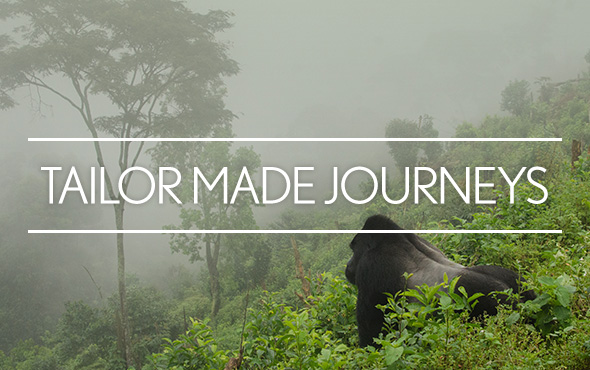
Tailor Made Uganda Safaris
Elevate your travel experience with private Tailor Made luxury safari tours to Uganda. Created by our experts, each bespoke tour to Uganda is designed just for you and your preferences with customized luxury Tailor Made adventures, accommodations, private air and more.
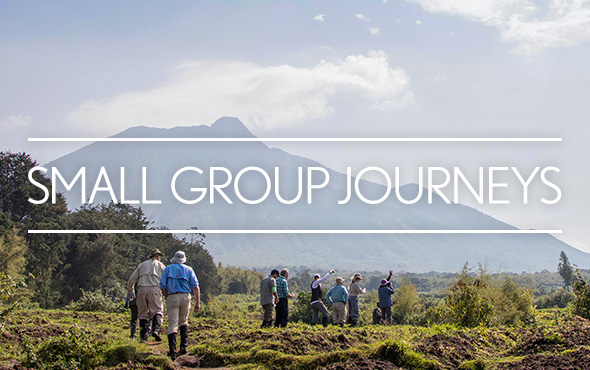
Uganda Small-Group Tours
Experience A&K's best-in-class luxury small-group tours to Uganda. Led by an acclaimed Resident Tour Director®, each unique journey is expertly designed to offer incredible insider access and an intimate small-group experience.
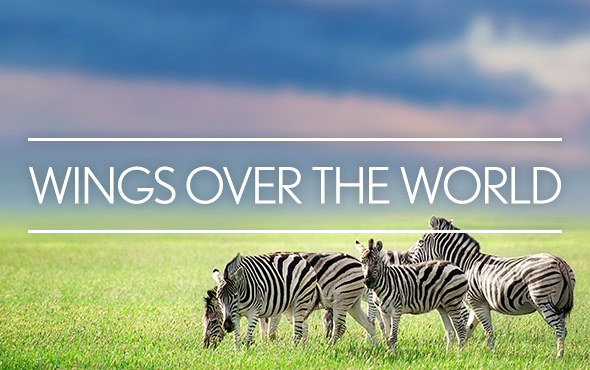
Journeys Featuring Private Air
See and experience more on exclusive Wings Over the World Journeys. The ultimate small-group travel experience, these luxury journeys feature itineraries packed with insider access and the ease of privately chartered flights between destinations.
Explore More of Uganda with A&K
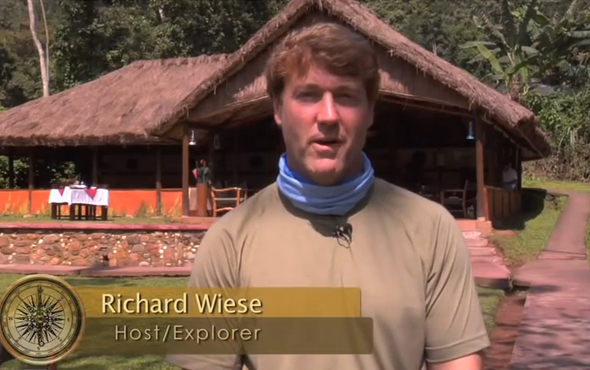
World-Famous Richard Wiese Visits Bwindi Impentrable Forest, Home to the Mountain Gorilla
Born to Explore host Richard Wiese visits Sanctuary Gorilla Forest Camp, Uganda, the ideal home base for tracking the vanishing mountain gorillas that live in Bwindi Impentrable Forest. Watch this exclusive video to find out more about the forest, the mountain gorillas, the Batwa pygmies and the camp itself.
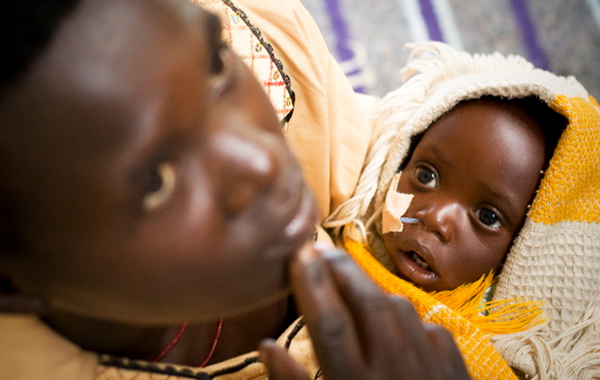
A&K Philanthropy Helps Train Nurses and Improve Healthcare in Rural Uganda
With modern health facilities scarce in rural Uganda, A&K Philanthropy (AKP) helped establish Bwindi Community Hospital. A decade later, as the expanding hospital found it difficult to hire nurses, AKP returned to help fund a nurse's training school that's making a profound impact on the community's well-being.
Frequently Asked Questions
-
When is the best time to visit Uganda?
May-October
-
What do I need to pack for a trip to Uganda?
Choose comfortable and casual clothing in natural, "breathable" fabrics and versatile styles that can be layered as temperatures may vary considerably in the course of the day.Choose comfortable and casual clothing in natural, "breathable" fabrics and versatile styles that can be layered as temperatures may vary considerably in the course of the day.
-
What kinds of Gorillas will I see in Uganda?
Both Uganda and Rwanda are home to the endangered mountain gorilla (G. beringei beringei).Both Uganda and Rwanda are home to the endangered mountain gorilla (G. beringei beringei).
-
What should I expect on a gorilla tracking excursion?
The day begins early. Set your alarm clock for an early-morning call, as you will need to be washed, dressed and breakfasted in time to leave camp at 7:45 am. Wear neutral colors and bring your rain gear. Long sleeves and long trousers tucked into your socks are a must for protection against ants, stinging nettles and whipping foliage. After arriving at the Park Headquarters, join your guide(s) and tracker(s) and begin tracking. Your lead tracker looks for clues — footprints, gnawed bamboo, dung — that indicate the location of a gorilla group. As you move closer, your tracker makes soft smacking and groaning sounds to assure the group that friends are approaching. If your morning trek has not been unusually long, you are likely to visit gorilla during their midday rest and play period. Your group will be instructed to crouch down and stay together while observing the animals. Stay low, maintain a submissive posture and watch them sideways or from below.The day begins early. Set your alarm clock for an early-morning call, as you will need to be washed, dressed and breakfasted in time to leave camp at 7:45 am. Wear neutral colors and bring your rain gear. Long sleeves and long trousers tucked into your socks are a must for protection against ants, stinging nettles and whipping foliage. After arriving at the Park Headquarters, join your guide(s) and tracker(s) and begin tracking. Your lead tracker looks for clues — footprints, gnawed bamboo, dung — that indicate the location of a gorilla group. As you move closer, your tracker makes soft smacking and groaning sounds to assure the group that friends are approaching. If your morning trek has not been unusually long, you are likely to visit gorilla during their midday rest and play period. Your group will be instructed to crouch down and stay together while observing the animals. Stay low, maintain a submissive posture and watch them sideways or from below.
-
Where did Dian Fossey study gorilla?
Dian Fossey began her famous studies of mountain gorilla in the Virunga Mountains, establishing the Karisoke Research Center in Rwanda's Volcanoes National Park, which continues with gorilla research and conservation activities.Dian Fossey began her famous studies of mountain gorilla in the Virunga Mountains, establishing the Karisoke Research Center in Rwanda's Volcanoes National Park, which continues with gorilla research and conservation activities.
-
Why is gorilla tracking so important to the species' survival?
Tourism finances habitat preservation, anti-poaching and community conservation efforts, assists in the habituation of gorilla families and helps limit the number of visitors and prevent exploitation of the species.Tourism finances habitat preservation, anti-poaching and community conservation efforts, assists in the habituation of gorilla families and helps limit the number of visitors and prevent exploitation of the species.
-
What do I need to pack for gorilla tracking In Uganda?
Choose comfortable and casual clothing in natural, "breathable" fabrics and versatile styles that can be layered, as temperatures may vary considerably in the course of the day. For game viewing, wear neutral colors (though not camouflage, which is illegal in most national parks and reserves). Black, navy or other dark colors tend to attract insects. When primate tracking, wearing long pants and shirts made of sturdy fabric is recommended to protect against scratches from stinging nettles and thorny vegetation. Also bring a good pair of comfortable, waterproof walking/hiking boots with textured soles, and ideally a good pair of protective leather or garden gloves should also be worn. Gaiters are also highly recommended. Avoid wearing perfume or cologne. Those with longer hair may wish to wear it in a ponytail or tuck it under a hat to avoid being tangled with thorny vegetation or flying insects.Choose comfortable and casual clothing in natural, "breathable" fabrics and versatile styles that can be layered, as temperatures may vary considerably in the course of the day. For game viewing, wear neutral colors (though not camouflage, which is illegal in most national parks and reserves). Black, navy or other dark colors tend to attract insects. When primate tracking, wearing long pants and shirts made of sturdy fabric is recommended to protect against scratches from stinging nettles and thorny vegetation. Also bring a good pair of comfortable, waterproof walking/hiking boots with textured soles, and ideally a good pair of protective leather or garden gloves should also be worn. Gaiters are also highly recommended. Avoid wearing perfume or cologne. Those with longer hair may wish to wear it in a ponytail or tuck it under a hat to avoid being tangled with thorny vegetation or flying insects.
-
What are the best ways to see gorilla in Uganda?
Tracking with a properly trained guide is the only legal and ethical way to observe mountain gorilla in the wild. Drawing on their extensive knowledge of gorilla movements and habits, your guide leads your small group through Bwindi Impenetrable National Park in search of one of the 14 gorilla troops known to inhabit the forest. Should you succeed in finding them, you are allowed one hour in the presence of these stunning creatures — more than enough time to appreciate their extraordinarily human-like social bonds.Tracking with a properly trained guide is the only legal and ethical way to observe mountain gorilla in the wild. Drawing on their extensive knowledge of gorilla movements and habits, your guide leads your small group through Bwindi Impenetrable National Park in search of one of the 14 gorilla troops known to inhabit the forest. Should you succeed in finding them, you are allowed one hour in the presence of these stunning creatures — more than enough time to appreciate their extraordinarily human-like social bonds.
-
Is it possible to arrange a private viewing just me, the guides and the gorilla?
No, all gorilla tracking takes place in small groups of from four to six people per gorilla family. There are several different gorilla families. To guard the gorilla against stress, visits are limited to one hour per family per day, regardless of the number of people in the visiting group. With the available time already so limited, private visits cannot be arranged.No, all gorilla tracking takes place in small groups of from four to six people per gorilla family. There are several different gorilla families. To guard the gorilla against stress, visits are limited to one hour per family per day, regardless of the number of people in the visiting group. With the available time already so limited, private visits cannot be arranged.
-
Am I able to touch a gorilla during my trek?
Absolutely not. Gorilla are curious creatures, and younger animals especially may approach or attempt to touch human visitors. Don’t reciprocate! Your guide may take steps to discourage this curious behavior, as it could create a threatening situation with the dominant male. You yourself should never attempt to approach or touch a mountain gorilla.Absolutely not. Gorilla are curious creatures, and younger animals especially may approach or attempt to touch human visitors. Don’t reciprocate! Your guide may take steps to discourage this curious behavior, as it could create a threatening situation with the dominant male. You yourself should never attempt to approach or touch a mountain gorilla.
-
Do I need a vaccination before my trip?
A yellow fever vaccination is currently required of ALL travellers in order to enter Uganda. The vaccine must be administered at least 10 days prior to your arrival, and you must carry an International Certificate of Vaccination provided by your physician; without it, you may be denied entry. You may also be asked to show proof of yellow fever vaccination when leaving Uganda. In addition, applicants are required to upload a copy of their International Certificate of Vaccination when applying for their Uganda tourist visa.A yellow fever vaccination is currently required of ALL travellers in order to enter Uganda. The vaccine must be administered at least 10 days prior to your arrival, and you must carry an International Certificate of Vaccination provided by your physician; without it, you may be denied entry. You may also be asked to show proof of yellow fever vaccination when leaving Uganda. In addition, applicants are required to upload a copy of their International Certificate of Vaccination when applying for their Uganda tourist visa.
 The Americas
The Americas Europe, Middle East and Africa
Europe, Middle East and Africa Australia, NZ and Asia
Australia, NZ and Asia






 The Americas
The Americas
 Europe, Middle East and Africa
Europe, Middle East and Africa Australia, NZ and Asia
Australia, NZ and Asia